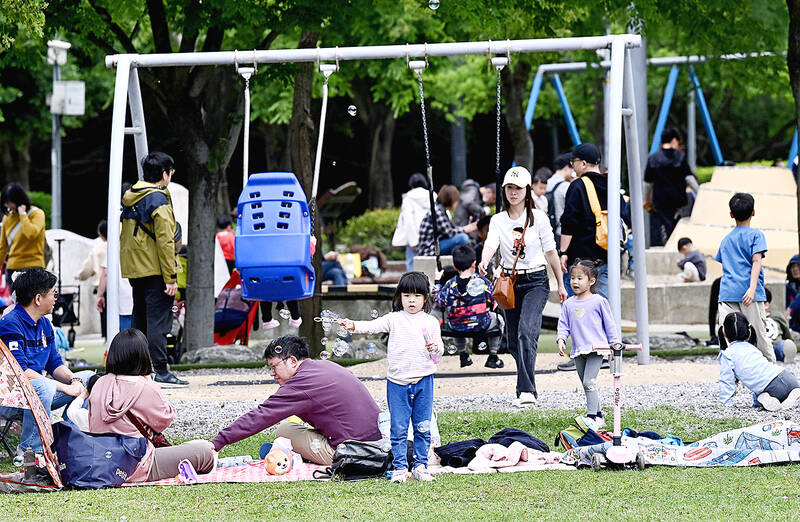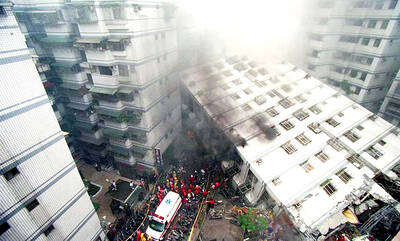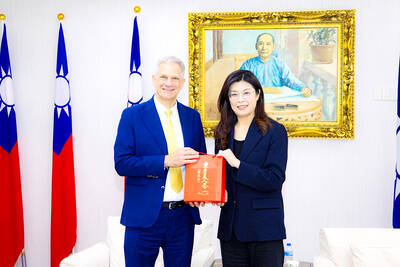The canonical shot of an East Asian city is a night skyline studded with towering apartment and office buildings, bright with neon and plastic signage, a landscape of energy and modernity. Another classic image is the same city seen from above, in which identical apartment towers march across the city, spilling out over nearby geography, like stylized soldiers colonizing new territory in a board game. Densely populated dynamic conurbations of money, technological innovation and convenience, it is hard to see the cities of East Asia as what they truly are: necropolises.
Why is this? The East Asian development model, with its gaudy miracle economies that pile up impressive industrialization, innovation, dollar reserves and exports, has a flip side. In export-oriented economies with suppressed domestic consumption (wages are held low and domestic saving encouraged to finance investment), currency controls and artificially depressed currencies, profits end up being plowed into land development, because the domestic consumption economy is too small.
This simple equation has profound implications. A key outcome of a successful export-oriented economy is wild overdevelopment of domestic land, experienced as massive and irrational overbuilding of public and private infrastructure. Japan has become the canonical example of this, with monumental public construction projects including bridges to nowhere, highways that carry a tithe of their rated capacity and village train stations built like shopping malls, all fueled by a tsunami of public debt. Its 1992 construction budget reached US$700 billion, a sum the US defense budget would not reach until over a decade later.

Photo: AFP
In Taiwan, the rivers have been lined with concrete, while housing prices skyrocket even though vacant residences are common. Meanwhile new apartment buildings mushroom across Taiwan’s cities. According to 2020 figures from the Architecture and Urban Research Institute, 62 percent of housing in South Korea consists of apartment buildings.
The Miracle economy is thus really two supernatural events: a highly visible export miracle, and an overdevelopment curse, visible only to locals.
Central to the complex ecosystems of land developers, local gangsters, corrupt local officials, gravel and concrete firms and trucking companies that drive the domestic economy are high-rise apartment buildings, where the money is. Many years ago I was at an expert talk in Taipei in which a speaker estimated that for a developer to break even on a large apartment project, just half the units must be sold, so great are the direct and indirect subsidies available to developers.

Photo: AFP
TOTAL FERTILITY RATE
The forests of residential high-rises in East Asian cities have a simple consequence for the future: across Asia and elsewhere, high-rise apartment buildings are strongly correlated with plummeting birth rates, though scholars continue to debate the reasons.
An excellent piece at Aporia by Daniel Hess lays out the correlation between apartment towers and birth rates.

Photo: Reuters
“High rise apartment towers (as they are usually built these days) are catastrophic for birth rates, and the causes are clear: there is no yard for kids to play in; kids bother the neighbors; and most apartments are too small for families,” he writes.
In suburbs, populations can be relatively dense, but birth rates are much higher, Hess says.
“Consider Sydney and Perth in Australia, where the TFR [total fertility rate] is a healthy 2.0 in the expensive but family-friendly suburbs but is an ultra-low 1.0 in the apartment-centric core.”

Photo: Lo Pei-der, Taipei Times
Asia urbanized, he said, but didn’t build suburbs on the US or Australian models.
The result of this development model is clear. Tokyo, studded with high-rises, had a TFR of .99 in 2023. In Seoul there are several districts with TFRs below 0.5 as of 2023. In central Busan in South Korea one district had a TFR of just 0.32 in 2023, less than half the city’s already low 0.66 overall TFR. South Korea’s overall TFR is around 0.8. Taiwan’s overall TFR is below 0.9. Shanghai has a TFR of just 0.57, according to calculations posted by famed Chinese demographer Yi Fuxian (易富賢) on X. Beijing, at 0.71 is right behind, and Chongqing is closing in on 1.0.
To put those numbers in perspective, at a TFR of 0.8, a population suffers a decline of over 90 percent in just three generations, the lifetime of a single human being. Tokyo is thus not a place that “offers a template” for urban development, as a recent New York Times opinion piece contended. Just the opposite: Tokyo is the place where the population of Japan goes — to die.
The supreme irony of this situation is that the ongoing demographic collapse in the East Asian construction-industrial states is slowly choking their technology export sectors to death. A hidden aspect of the Miracle export economies is slavish devotion of the workers to their tech firms. Traditionally they faced brutal workloads and long hours. The population of dedicated engineers necessary to make the export model work has been gutted by the domestic economy’s apartment-centered development model and the ideals of convenience that underpin it.
LABOR SHORTAGES
Today labor shortages are widespread across the major East Asian economies, partly due to demographics, but also to cultural change. The young do not want the work lives of their parents. Taiwan thus has deep shortages of high-level talent and mid-level professionals.
A 2023 Taipei Times editorial, one of scores of such pieces from the region on labor shortages, describes the situation: “most serious was the shortage of 84,000 mid-level technical workers, which includes technicians and associate professionals, craft and trade workers, as well as plant and machine operators.”
Taiwan hosts 750,000 migrant workers, while Korea has over a million. Even famously xenophobic Japan is starting to import people. That well will dry up in the coming decades, as these workers are drawn from countries whose TFRs are also plummeting.
The East Asian innovation and production juggernaut is living, not on borrowed time, but on borrowed populations. Its development model, lauded by economists and policymakers the world over, is a suicide pact.
There is still time for us to change.
Notes from Central Taiwan is a column written by long-term resident Michael Turton, who provides incisive commentary informed by three decades of living in and writing about his adoptive country. The views expressed here are his own.

Seven hundred job applications. One interview. Marco Mascaro arrived in Taiwan last year with a PhD in engineering physics and years of experience at a European research center. He thought his Gold Card would guarantee him a foothold in Taiwan’s job market. “It’s marketed as if Taiwan really needs you,” the 33-year-old Italian says. “The reality is that companies here don’t really need us.” The Employment Gold Card was designed to fix Taiwan’s labor shortage by offering foreign professionals a combined resident visa and open work permit valid for three years. But for many, like Mascaro, the welcome mat ends at the door. A

Last week gave us the droll little comedy of People’s Republic of China’s (PRC) consul general in Osaka posting a threat on X in response to Japanese Prime Minister Sanae Takaichi saying to the Diet that a Chinese attack on Taiwan may be an “existential threat” to Japan. That would allow Japanese Self Defence Forces to respond militarily. The PRC representative then said that if a “filthy neck sticks itself in uninvited, we will cut it off without a moment’s hesitation. Are you prepared for that?” This was widely, and probably deliberately, construed as a threat to behead Takaichi, though it

If China attacks, will Taiwanese be willing to fight? Analysts of certain types obsess over questions like this, especially military analysts and those with an ax to grind as to whether Taiwan is worth defending, or should be cut loose to appease Beijing. Fellow columnist Michael Turton in “Notes from Central Taiwan: Willing to fight for the homeland” (Nov. 6, page 12) provides a superb analysis of this topic, how it is used and manipulated to political ends and what the underlying data shows. The problem is that most analysis is centered around polling data, which as Turton observes, “many of these

Since Cheng Li-wun (鄭麗文) was elected Chinese Nationalist Party (KMT) chair on Oct. 18, she has become a polarizing figure. Her supporters see her as a firebrand critic of the ruling Democratic Progressive Party (DPP), while others, including some in her own party, have charged that she is Chinese President Xi Jinping’s (習近平) preferred candidate and that her election was possibly supported by the Chinese Communist Party’s (CPP) unit for political warfare and international influence, the “united front.” Indeed, Xi quickly congratulated Cheng upon her election. The 55-year-old former lawmaker and ex-talk show host, who was sworn in on Nov.